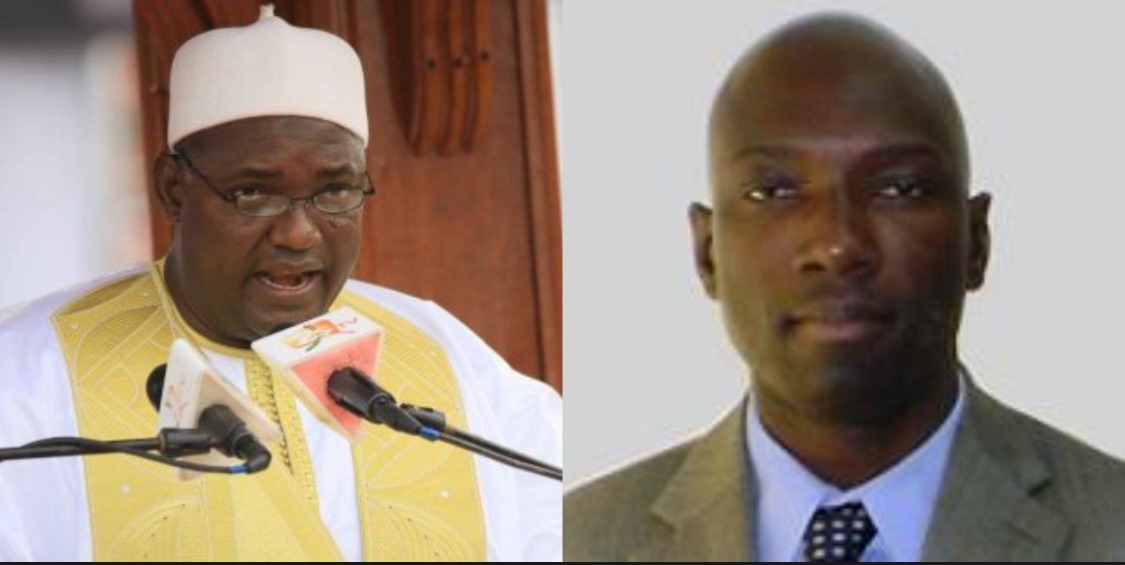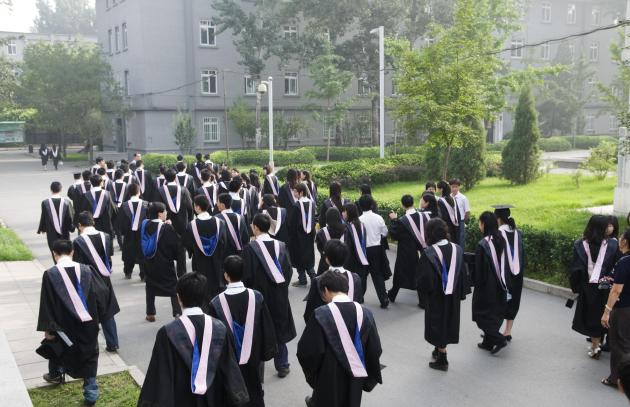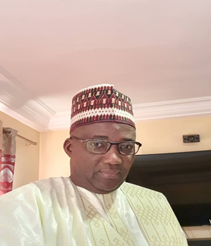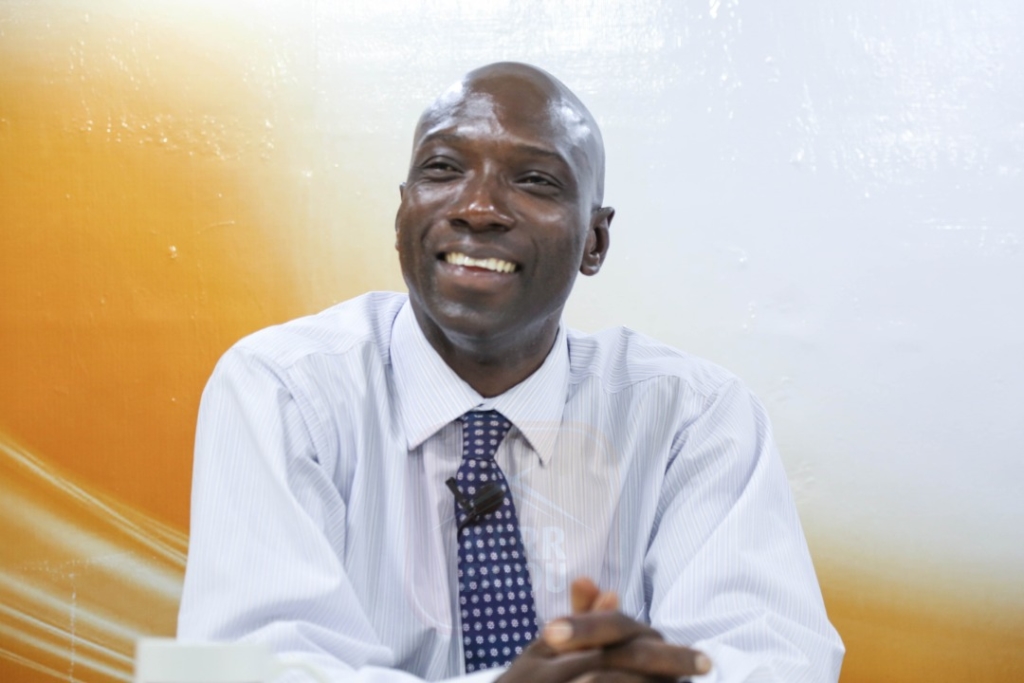Dr. Ousman Gajigo
In his speech to the nation on Independence Day on 18thFebruary 2024, President Adama Barrow boasted about what he called ‘achievements’ by his regime. He emphasized agricultureand infrastructure, among others. Either President Barrow must be living in an alternate universe or he must be convinced that the country can be made to believe any fiction no matter how divorced from reality it is.
According to President Barrow, “The agriculture sector is now booming, following the bumper harvest recorded this year.” That is quite a statement, and it is far from the truth. And it is important that we the citizens challenge our leaders when they make assertions on important national issues that deviate from reality and not to mince words in doing so. And what evidence did the president present to back up this bold statement? None whatsoever.
Agriculture entails many activities. I will present some evidence not only for the sector as a whole but also on the various sub-sectors such as cereal production, livestock and vegetables. Luckily for us, there are accessible indicators that can provide uswith objective information on the state of our agricultural sector since Adama Barrow came to power in 2017.
Overall agricultural production can be aggregated in a single number called the production index. Using this figure from FAO, which has been supplied with data from our own Ministry of Agriculture, the country’s agricultural output has been falling on average about 4% per year since 2017. On a per capita basis, it has been falling at a rate of over 5% per annum. How are the various sub-sectors faring within the above aggregate figure? The per capita production in the cereal fell almost 9% per annum since 2017. Productions in the livestock and vegetablesub-sectors fell by over about 2% per annum since 2017.
To make the above numbers a bit more concrete, let’s look at some individual crops. The country produced over 30,000 tons of groundnuts in 2016 but we are currently barely at 20,000 tons. In 2016, the country produced about 49,000 tons of rice, while we are still below 50,000 tons today. Over the past 7years, The Gambia has the lowest average rice yield in all of ECOWAS. The rice production figures would have been even worse if we did not have some private investors active in the sector. As for vegetable growing, there is almost no support from the government to village gardens that supply the country with essential vegetables. Virtually all the support these village gardens receive come from limited duration donor-funded projects and philanthropic efforts by NGOs and private individuals. In other words, the few bright spots in the agriculture sector occur in spite of, not because of, the AdamaBarrow regime.
It is not surprising why results in the agricultural sector have been dismal and far from a success story that president Barrowis trying to peddle. The government has not implemented any coherent plans in the sector. It simply continues the same failed practices that the previous government had in place. Here are the key elements of these flawed traditional plans. Each single year, the government ritually distributes fertilizers at the beginning of the rainy season without carefully matching the types with the crops grown. These fertilizers almost always arrive late, and the distribution is not guided by enough extension workers in the field to ensure proper use. The few quantities of rice seeds donated to farmers are frequently distributed late, and are also rarely accompanied by extension service. As in previous years, the payments for farmers for their groundnut harvests arrived months late even though the government threatened communities for selling to unapproved vendors.
In The Gambia, we are used to traditional government proclamations of bumper harvests as long as there is no general crop failure to such an extent that we have forgotten the actual meaning of the phrase “bumper harvest”. If that is the standard we aim for, there will be no development in any sector in the country. The fact of the matter is that the agricultural sector has been doing poorly under the Adama Barrow regime. What has saved the sector from total collapse has been the unsung heroes, which are the poor farmers that continue to toil despite government failure. It is also important not to forget the small number of hardworking agricultural staff in the field who are poorly paid. The exclusive source of the failure is at the level of the central government where there has been no coherent policy. Key evidence of the lack of seriousness when it comes to agriculture is the minuscule budget allocated to the sector by the government, almost all of which went into recurrent expenditures rather than needed investments.
To underscore President Barrow’s lack of seriousness when it comes to agriculture, consider the fact that he did not bother to even point to one evidence or indicators that matters to people on the ground. Have we seen any achievements in agriculture in terms of food prices in the country? When productions in key crops actually experience bumper harvest, their effects must be seen in prices. And reduction in prices is one of the key impacts that citizens can experience from a booming sector. Consider rice, which is our most important cereal crop today. Have we seen achievements in terms of reduction of quantity of rice imports from abroad? Have we seen any impact in terms of the prices we pay for rice?
The president also boasted about infrastructural development. While it must be acknowledged that many new roads have been built, the reality is that far more development could have been achieved in the infrastructure sector if we had a competent government. To assess the government’s track record in this sector, one must not just naively look at before and after, but rather what the country could have realistically achieved given the opportunities we have in a post-dictatorship regime. Moreover, we should not forget that quality also matters.
Let’s consider the flagship road project, which is being funded by the OIC. Here is a road project that could have been the foundation of a major road master plan in the greater Banjul area. Instead, we are about to the presented with a road that, while it is an improvement over the previous 2-lane road, it is of far lower quality than what could have been achieved if executed with even minimal level of planning.
The first problem is timeliness, given how long it took the OIC project to take-off. Secondly, it has been badly designed, and thousands of Gambians are enduring the hardships caused by this avoidable problem. As a consequence, major bottlenecks in Brusubi and Sukuta are almost erasing any time-savings that are supposed to be gained because of improper spacing of intersections and the absence of flyovers in critical areas where they are needed. Pedestrian casualties are mounting due to the fact that the current poor design does not take into account the welfare of individuals with limited mobility. What’s more, open gutters near major intersections in Brusubi and Kololi would be impossible to cross for almost all but the most athletic individuals. The absence of road shoulders to stopping vehicles mean that deadly rear-ended accidents will be far more commonplace and when they could be avoided.
The Transgambia bridge, which cannot be credited to President Barrow because it was conceived, designed and constructed before he came to power, has now been tied up in a strange transaction which the government falsely claimed to be “asset recycling”. In an actual asset recycling, the resources earned from that project would have directly gone into financing a specific infrastructure project. Instead, the first installment paid by Africa50 went into the general budget, most of which was allocated to recurrent expenditures. Instead of earning significant quantity of money on a monthly basis from the bridge, the country has now forgone that revenue without the benefit of getting a comparable infrastructure.
Indeed, the defining feature of infrastructure projects under President Barrow, particularly with regards to roads, is the glaring poor quality. Let me highlight a few examples. The road constructed in Sabach Sanjal is noteworthy for its extremely poor quality. We have all been aware of the haphazard way in which the basalt was poured on the road to the extent that villagers have been filmed scooping them up. In fact, within a year of construction, potholes are already appearing. The on-going road construction in Brufut and Wullingkama have as many irregularities as the OIC road. The only difference being that construction project is not getting as much attention as the OIC road given its smaller size. Nevertheless, that project also suffers from poor design and seems to have a contractor that only seem to do work every other week.
The only roads constructed during the Adama Barrow regimethat are of acceptable quality are the ones constructed by the Chinese government. In those roads, the Chinese government actually designed them and execute the construction with their own firms. The reason for the difference in outcome should be obvious to everyone. When the Barrow-led government is involved in the design or procurement or construction aspects of infrastructure project, quality inevitably suffers.
In order to develop our country, we must distinguish between real achievements and empty boasts. This requires holding our leaders accountable and taking them to task when they do not deliver. Empty claims must be challenged when they occur to put leaders on notice. Commendations should be reserved for only actual achievements. We are far from the situation where we need to be in order to praise Adama Barrow for achievements in agriculture and infrastructure. To pretend otherwise is to institutionalize mediocrity.




